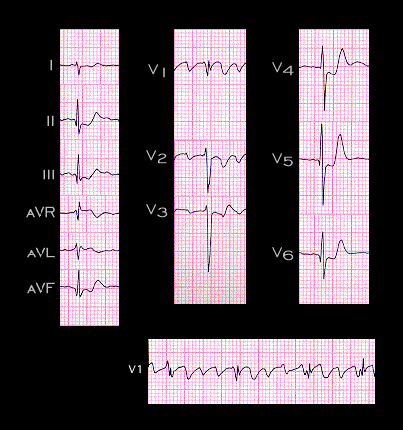
The tracing shows atrial fibrillation, right axis deviation, and an S wave in leads I, V5 and V6 that is of greater amplitude than the S wave in V1. The tracing suggests right ventricular hypertrophy in the setting of atrial fibrillation and is consistent with a diagnosis of mitral stenosis. But, in this patient, the diagnosis was a left atrial myxoma which was obstructing the mitral valve. Note that there is also ST depression seen best in leads II, V4-6. This is due to digitalis which was being administered because of the atrial fibrillation.
